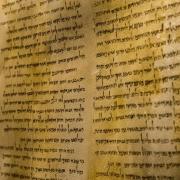Opening the Dead Sea Scrolls to the World
Researchers: Prof. Nachum Dershowitz (Computer Science), Prof. Jonathan Ben-Dov (Biblical Studies)
Researchers: Prof. Nachum Dershowitz (Computer Science), Prof. Jonathan Ben-Dov (Biblical Studies)
Our goal in this collaborative project is to adapt various algorithms in computer vision and machine learning (segmentation, registration, and alignment), turning them into practical methods that can be applied to the whole photographic collection of Dead Sea Scrolls (DSS), including even very fragmentary ones from Qumran.
The resulting tools are already active in the website of Scripta Qumranica Electronica (https://sqe.deadseascrolls.org.il), operated by the Israel Antiquities Authority (IAA), and are improved as the project advances. The algorithms thus greatly enhance the usability of the DSS collection, which enjoys enormous interest in the public sphere due to its overwhelming cultural and historical importance abd the open access granted by the IAA.
With such highly fragmentary scrolls, the registration and alignment of the rich photographic log is a significant asset for improving the reconstruction of scrolls and expose hitherto unknown texts. The website – augmented by our advanced algorithms - brings multiple images and texts together for the benefit of scholars and laypersons alike, as well as enables a new wave of scholarly editions of this highly difficult and fragmentary material.
The figure shows examples of recent color images on the left and an old IR image on the right. The two arrows indicate matches.





